

Tulipa praecox
Finally, after years of research, consultations with top horticulturists and many hours on the road, a tulip long-forgotten in commercial production and marked by historical significance has been reintroduced by the Southern Bulb Company. For generations, gardeners have longed for a low-maintenance, naturalizing tulip for the southern United States.
After blooming and multiplying naturally in old Texas towns and abandoned lots for over 100 years, Tulipa praecox (the "Texas Tulip" or "Fire Tulip" or "Georgetown Tulip") promises gardeners a break from the "chilling routine" and a chance for a naturalized tulip garden in the heat and humidity of the southern United States.
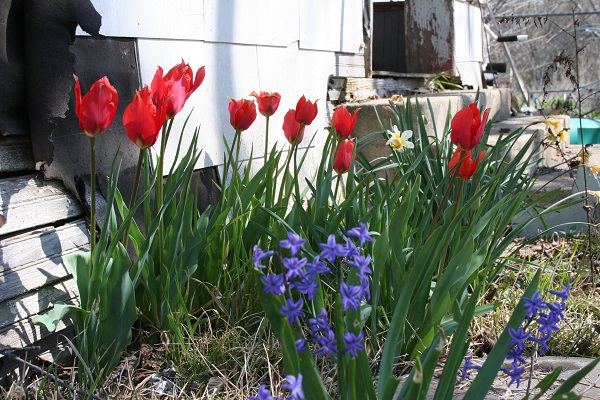
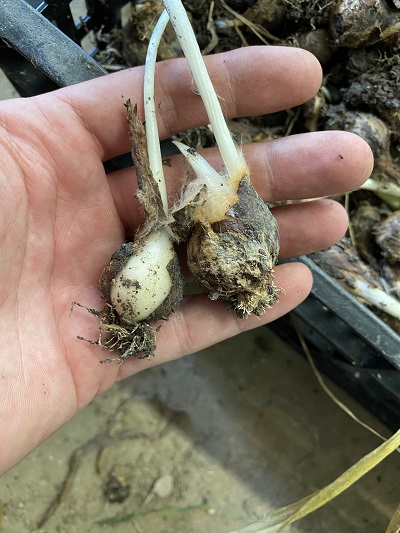
What is the normal chilling routine for tulips? In the absence of a "warm-climate tulip," many have practiced a "chill, plant, dig" regimen in order to grow imported tulips in their garden. This method, called artificial chilling, "tricks" the bulb into believing they are in a colder climate, in order that they might receive enough "chilling hours" (temperatures between 32 and 45 degrees Fahrenheit) for a bloom cycle to begin. The blooms can be spectacular! Just look at this photo taken at a formal garden of tulips chilled to bloom in pots.
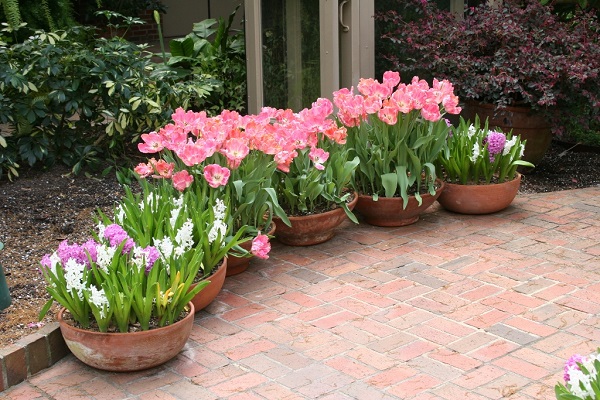
However, despite their showy displays, the southern heat and humidity often rot imported bulbs after one or two years. We are wanting a tulip that will spread and bloom every year in our garden, or even naturalize if left out in an open grassy area, like the photos below.
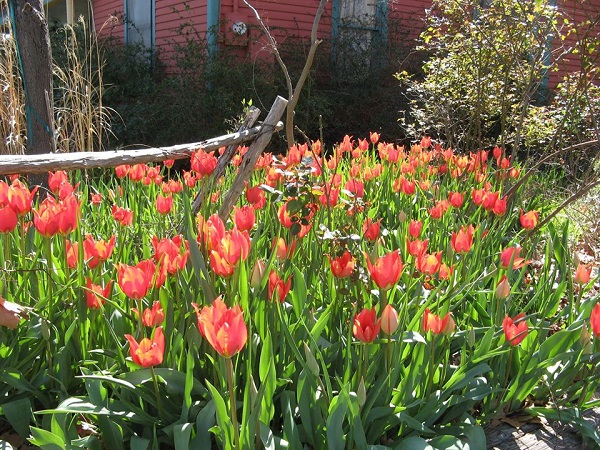
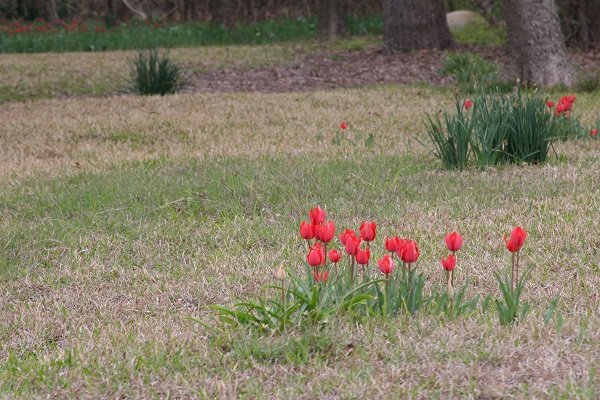
The Texas Tulips are interesting bulbs and have unique characteristics. They thrive in blackland soils that cling to their fuzzy skins, just like the same soil forms mud on your boots if you've ever had to walk through it. When the bulbs want to go deeper, the bulbs send droppers sinking new bulbs deeper into the ground. If you've ever tried to dig one, you can find out they like to move deep into the soil, and their leaves will quickly detach from the bulb, even when you think you are pulling very lightly!
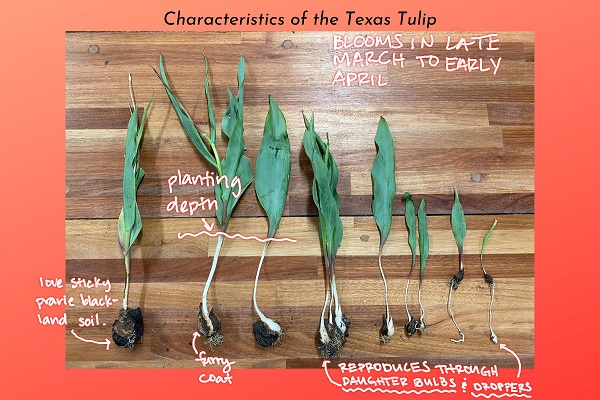
We've enjoyed a long history with this bulb. The story of a red tulip is in many ways the origin story of The Southern Bulb Company...the search for a perennial red tulip that would replace the red tulip that only blooms once and dies forever. From the time my old dog, Fischer helped me dig them in 2006 to now, we've struggled with our production as they are a favorite of voles and other critters. However, we are committed to this bulb, even if it has caused us money and gardening pain in the past. As all gardeners will tell you, they've killed more plants than they have succeeded with. That does not mean you give up the on the flower; rather, you keep trying until you figure out the solution. This is a flower bulb worth fighting for! If you are in the right soil, and take care of the Texas tulips, they will be a delight for many years to comes. We hope you enjoy the gardening journey as much as we do.
We have limited quantities each year and only sell them 2 per pack. They multiply quickly, and you will soon have plenty in years to come! If we are currently sold out, please email us at info@southernbulbs.com and we will let you know when they are available again!
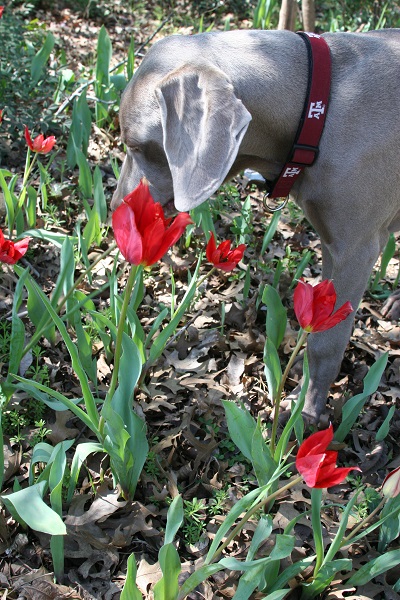
AN ADDITIONAL CAUTION: This tulip has been found in sites characterized by black clay that dries out in the summer time. We call it the prairie blackland area in Texas, and there are stretches of the same soil in Mississippi near Jackson and running through Alabama and Georgia. This soil is known to crack, with some cracks reaching 2 feet down into the soil. It is in these conditions that this bulb thrives. "Improved" garden soils, moisture retaining soils like sandy loam, and irrigated areas are not conducive for success with this bulb.
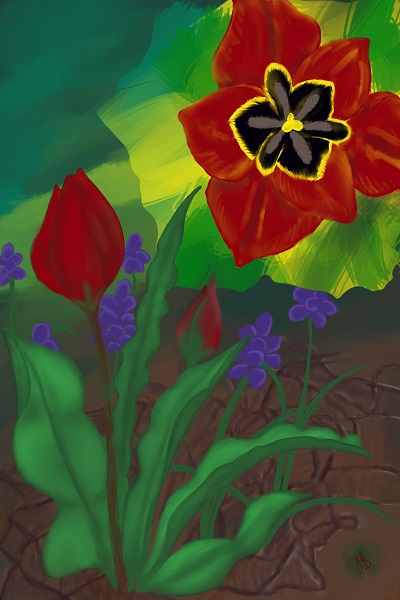
Tulipa praecox
Finally, after years of research, consultations with top horticulturists and many hours on the road, a tulip long-forgotten in commercial production and marked by historical significance has been reintroduced by the Southern Bulb Company. For generations, gardeners have longed for a low-maintenance, naturalizing tulip for the southern United States.
After blooming and multiplying naturally in old Texas towns and abandoned lots for over 100 years, Tulipa praecox (the "Texas Tulip" or "Fire Tulip" or "Georgetown Tulip") promises gardeners a break from the "chilling routine" and a chance for a naturalized tulip garden in the heat and humidity of the southern United States.


What is the normal chilling routine for tulips? In the absence of a "warm-climate tulip," many have practiced a "chill, plant, dig" regimen in order to grow imported tulips in their garden. This method, called artificial chilling, "tricks" the bulb into believing they are in a colder climate, in order that they might receive enough "chilling hours" (temperatures between 32 and 45 degrees Fahrenheit) for a bloom cycle to begin. The blooms can be spectacular! Just look at this photo taken at a formal garden of tulips chilled to bloom in pots.

However, despite their showy displays, the southern heat and humidity often rot imported bulbs after one or two years. We are wanting a tulip that will spread and bloom every year in our garden, or even naturalize if left out in an open grassy area, like the photos below.


The Texas Tulips are interesting bulbs and have unique characteristics. They thrive in blackland soils that cling to their fuzzy skins, just like the same soil forms mud on your boots if you've ever had to walk through it. When the bulbs want to go deeper, the bulbs send droppers sinking new bulbs deeper into the ground. If you've ever tried to dig one, you can find out they like to move deep into the soil, and their leaves will quickly detach from the bulb, even when you think you are pulling very lightly!

We've enjoyed a long history with this bulb. The story of a red tulip is in many ways the origin story of The Southern Bulb Company...the search for a perennial red tulip that would replace the red tulip that only blooms once and dies forever. From the time my old dog, Fischer helped me dig them in 2006 to now, we've struggled with our production as they are a favorite of voles and other critters. However, we are committed to this bulb, even if it has caused us money and gardening pain in the past. As all gardeners will tell you, they've killed more plants than they have succeeded with. That does not mean you give up the on the flower; rather, you keep trying until you figure out the solution. This is a flower bulb worth fighting for! If you are in the right soil, and take care of the Texas tulips, they will be a delight for many years to comes. We hope you enjoy the gardening journey as much as we do.
We have limited quantities each year and only sell them 2 per pack. They multiply quickly, and you will soon have plenty in years to come! If we are currently sold out, please email us at info@southernbulbs.com and we will let you know when they are available again!

AN ADDITIONAL CAUTION: This tulip has been found in sites characterized by black clay that dries out in the summer time. We call it the prairie blackland area in Texas, and there are stretches of the same soil in Mississippi near Jackson and running through Alabama and Georgia. This soil is known to crack, with some cracks reaching 2 feet down into the soil. It is in these conditions that this bulb thrives. "Improved" garden soils, moisture retaining soils like sandy loam, and irrigated areas are not conducive for success with this bulb.
